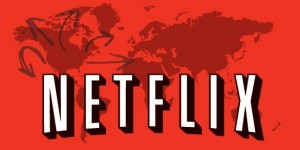As the 21st Century marches on, it is sad to see the former epitome of luxury, the Cadillac, left in the draft of other luxury cars such as the BMW, the Mercedes, and the Bentley. Well, with the signing of Mr. Johan de Nysschen (former Head of Nissan’s luxury car division), Cadillac endeavors to regain its lost glory.
How? First, by moving its headquarters to NYC. Second, by doubling Cadillac’s product portfolio. In my opinion, expansion of the product range is an effective measure to recapture part of the luxury cars market. Cadillac plans on releasing models into numerous customer segments:
- Mid income – Entry Level Luxury Car (competitor to cars such as the Mercedes CLA)
- Mid – High income – Cadillac CT6 (competitor to cars such as the Mercedes S Class)
- High Income – Ultra-luxurious Car (competitor to the Bentley)
- Sport Enthusiasts Males – Coupes and Convertibles
By targeting several markets, Cadillac aims to revise its growth strategy from Focus Differentiation to Differentiation in a mass market. If successfully implemented, Cadillac can regain its long terms market share and profits. However, to ensure that this strategy doesn’t lead to the dilution of its brand, a combination of short and long run PR campaigns should be used, focusing on the company’s USP, that is, the luxury and quality of its cars.
Also, I believe that the move to relocate the headquarters is too strategic in nature and can distract the management from the more pressing matter of the expansion of Cadillac’s product portfolio. Furthermore, it can increase chances of insolvency as working capital will be used in the relocation, especially, given NYC’s commercial value. Instead of tying up its working capital to this, it is advised that Cadillac reserve these assets for financing the marketing, production and operations management (including Total Quality Management) of its new models. This will strengthen the short run release of the new cars, thereby allowing them to penetrate the luxury cars industry more effectively in the longer term.
Hopefully, by keeping to these suggestions, Cadillac will be able to please more than just the rappers of 21st Century..
Bibliography
“Cadillac: A New Standard?” The Economist. The Economist Newspaper, 27 Sept. 2014. Web. 27 Sept. 2014. <http://www.economist.com/news/business-and-finance/21620512-general-motors-hoping-boost-its-profits-expanding-cadillac-luxury-vehicles-new>.

